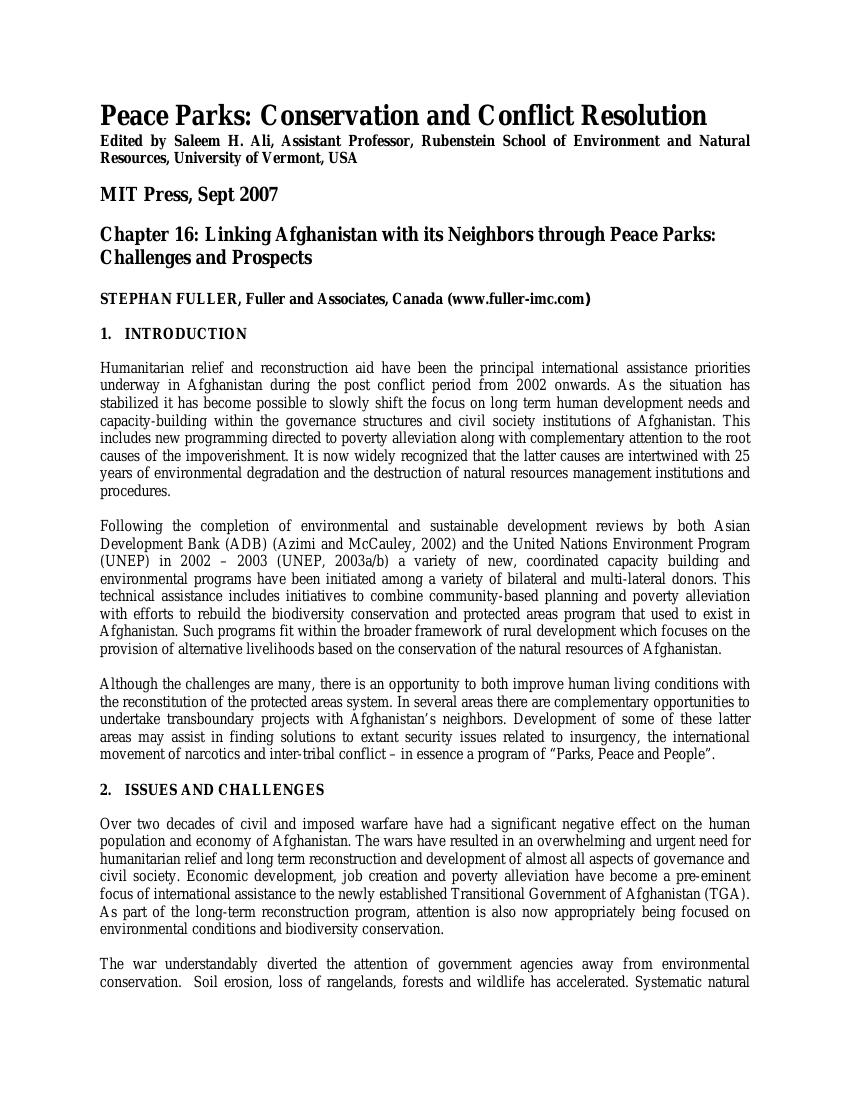Humanitarian relief and reconstruction aid have been the principal international assistance priorities underway in Afghanistan during the post conflict period from 2002 onwards. As the situation has stabilized it has become possible to slowly shift the focus on long term human development needs and capacity-building within the governance structures and civil society institutions of Afghanistan. This includes new programming directed to poverty alleviation along with complementary attention to the root causes of the impoverishment. It is now widely recognized that the latter causes are intertwined with 25 years of environmental degradation and the destruction of natural resources management institutions and procedures. Following the completion of environmental and sustainable development reviews by both Asian Development Bank (ADB) (Azimi and McCauley, 2002) and the United Nations Environment Program (UNEP) in 2002 – 2003 (UNEP, 2003a/b) a variety of new, coordinated capacity building and environmental programs have been initiated among a variety of bilateral and multi-lateral donors. This technical assistance includes initiatives to combine community-based planning and poverty alleviation with efforts to rebuild the biodiversity conservation and protected areas program that used to exist in Afghanistan. Such programs fit within the broader framework of rural development which focuses on the provision of alternative livelihoods based on the conservation of the natural resources of Afghanistan. Although the challenges are many, there is an opportunity to both improve human living conditions with the reconstitution of the protected areas system. In several areas there are complementary opportunities to undertake transboundary projects with Afghanistan’s neighbours. Development of some of these latter areas may assist in finding solutions to extant security issues related to insurgency, the international movement of narcotics and inter-tribal conflict – in essence a program of “Parks, Peace and People”.
